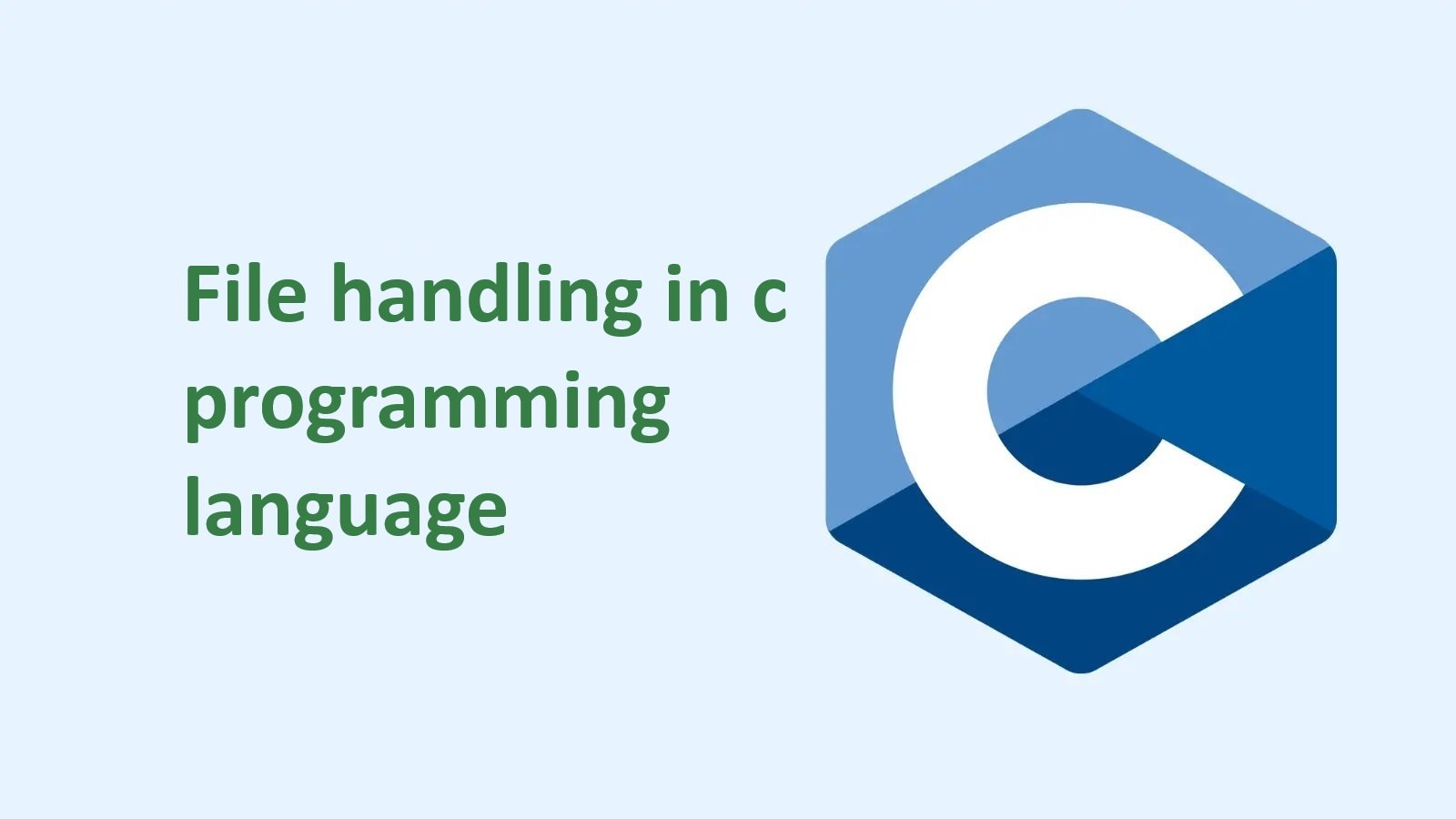In this blog, we will learn about File handling in c which are very important for large-scale data processing. Data are stored in data files and programs are stored in program files.
File handling in c
Abstractly, a file is a collection of bytes stored on a secondary storage device, which is generally a disk of some kind. The collection of bytes may be interpreted, for example, as characters, words, lines, paragraphs and pages from a textual document; fields and records belonging to a database; or pixels from a graphical image. The meaning attached to a particular file is determined entirely by the data structures and operations used by a program to process the file. It is conceivable (and sometimes it happens) that a graphic file will be read and displayed by a program designed to process textual data. The result is that no meaningful output occurs (probably) and this is to be expected. A file is simply a machine decipherable storage media where programs and data are stored for machine usage.
Essentially there are two kinds of File handling in c that programmers deal with text files and binary files. These two classes of files will be discussed in the following sections.
ASCII Text files
A text file can be a stream of characters that a computer can process sequentially. It is not only processed sequentially but only in forward direction. For this reason a text file is usually opened for only one kind of operation (reading, writing, or appending) at any given time.
Similarly, since text files only process characters, they can only read or write data one character at a time. (In C Programming Language, Functions are provided that deal with lines of text, but these still essentially process data one character at a time.) A text stream in C is a special kind of file. Depending on the requirements of the operating system, newline characters may be converted to or from carriage-return/linefeed combinations depending on whether data is being written to, or read from, the file. Other character conversions may also occur to satisfy the storage requirements of the operating system. These translations occur transparently and they occur because the programmer has signalled the intention to process a text file.
Binary files
A binary file is no different to a text file. It is a collection of bytes. In C Programming Language a byte and a character are equivalent. Hence a binary file is also referred to as a character stream, but there are two essential differences which are:-
- No special processing of the data occurs and each byte of data is transferred to or from the disk unprocessed.
- C Programming Language places no constructs on the file, and it may be read from, or written to, in any manner chosen by the programmer.
Binary files can be either processed sequentially or, depending on the needs of the application, they can be processed using random access techniques. In C Programming Language, processing a file using random access techniques involves moving the current file position to an appropriate place in the file before reading or writing data. This indicates a second characteristic of binary files-they a generally processed using read and write operations simultaneously.
For example, a database file will be created and processed as a binary file. A record update operation will involve locating the appropriate record, reading the record into memory, modifying it in some way, and finally writing the record back to disk at its appropriate location in the file. These kinds of operations are common to many binary files, but are rarely found in applications that process text files.

